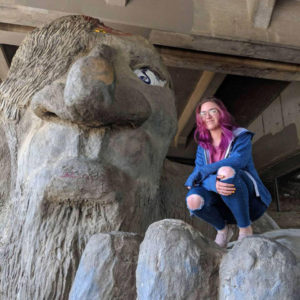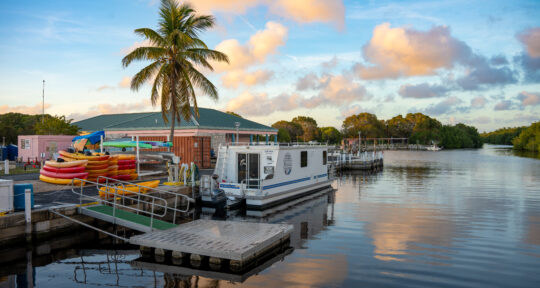The National Park Service established the Great Smoky Mountains National Park in 1934. But the park’s rich history and culture were brewing in the hills long before that. You can still experience that special past for yourself. The park’s largest campground, Elkmont, is mere steps away from a ghost town, where you can explore the remains of a logging community and two turn-of-the-century-era resorts.
This world-class resort community turned ghost town in the Smokies might not look like much now, but it’s where the massive tourism industry in the area got its humble start—and where the movement to create the park was born.
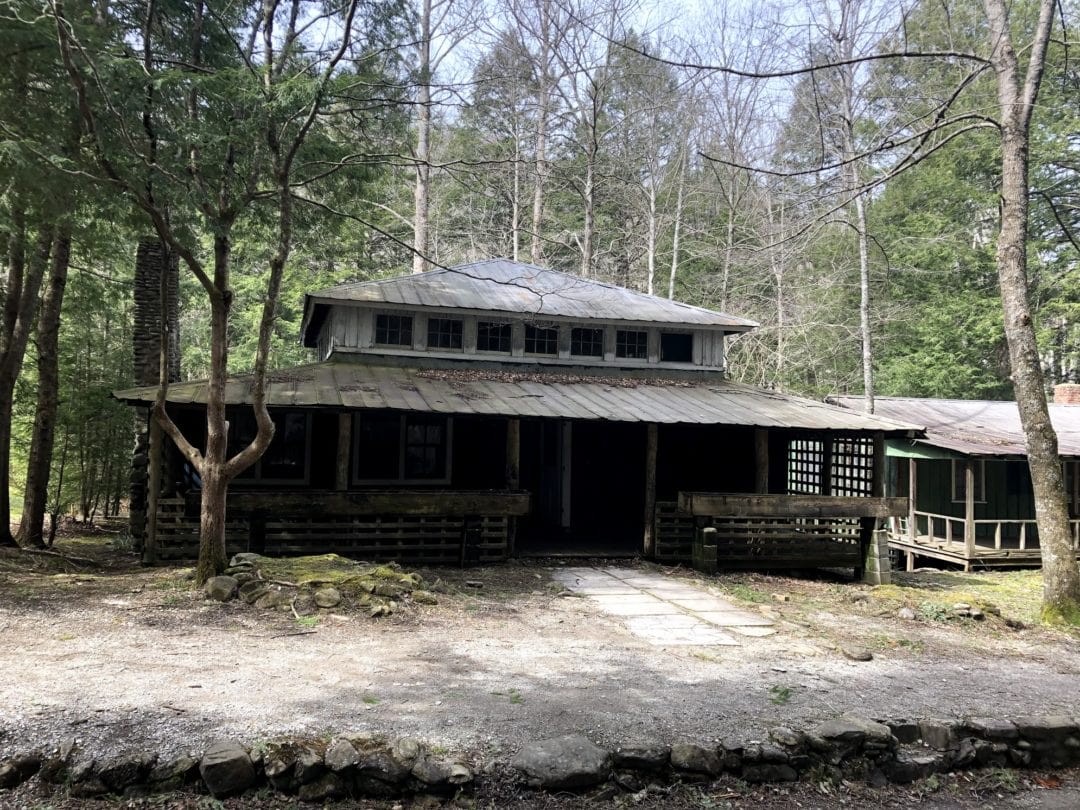
Elkmont’s early days
The first settlers arrived in Elkmont in the mid-1800s. They were homesteaders, hunters, and small-scale loggers, and they formed a community along the Little River. Logging would eventually grow to be a huge industry in town. Lumber from ash, poplar, cherry, and hemlock trees was sent down the river to Knoxville to be processed. Elkmont proper was formally established in 1907.
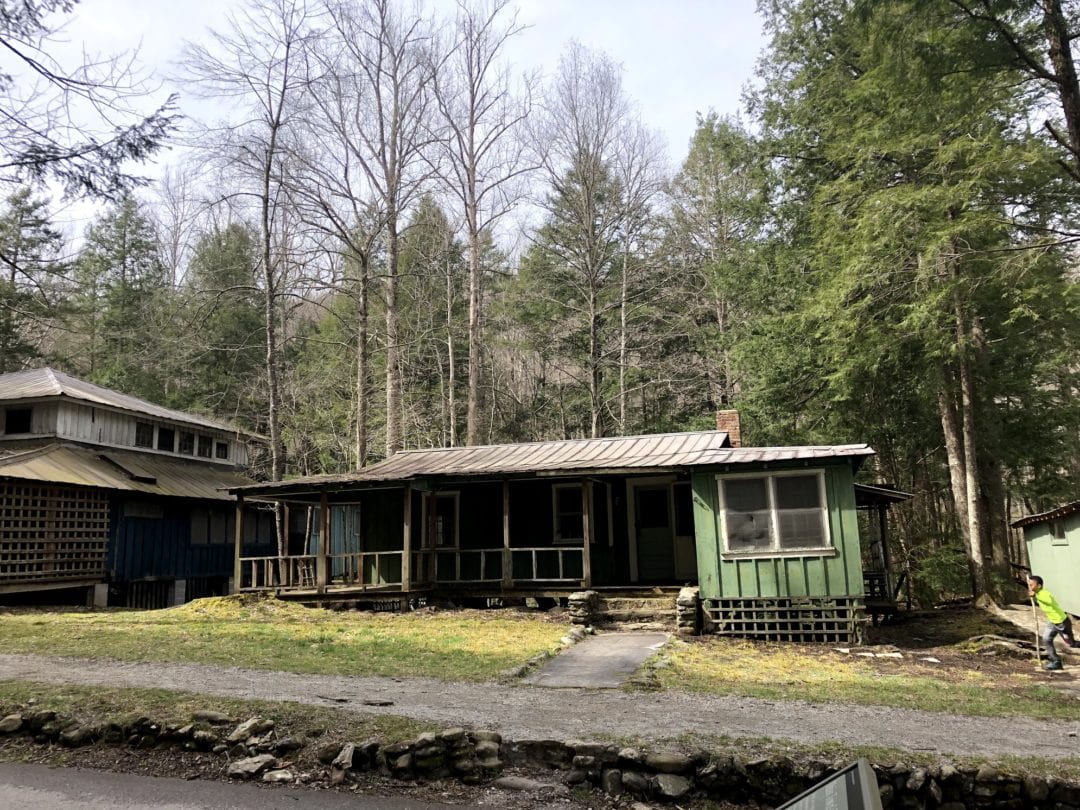
Before that, in 1905, a local named Levi Trentham (you can still see his 1845-era cabin today, it was just restored) started selling tracts of land to a businessman named W. B. Townsend. Townsend established the Little River Lumber Company, which took the local logging industry to a massive new level. The nearby settlement of Townsend is named for W.B. He established the town when he built his band sawmill there.
Eventually, the Little River Lumber Company built a railroad to transport logs along the rough, 18-mile route between Elkmont and Townsend. Its tracks were soon extended to reach Knoxville.
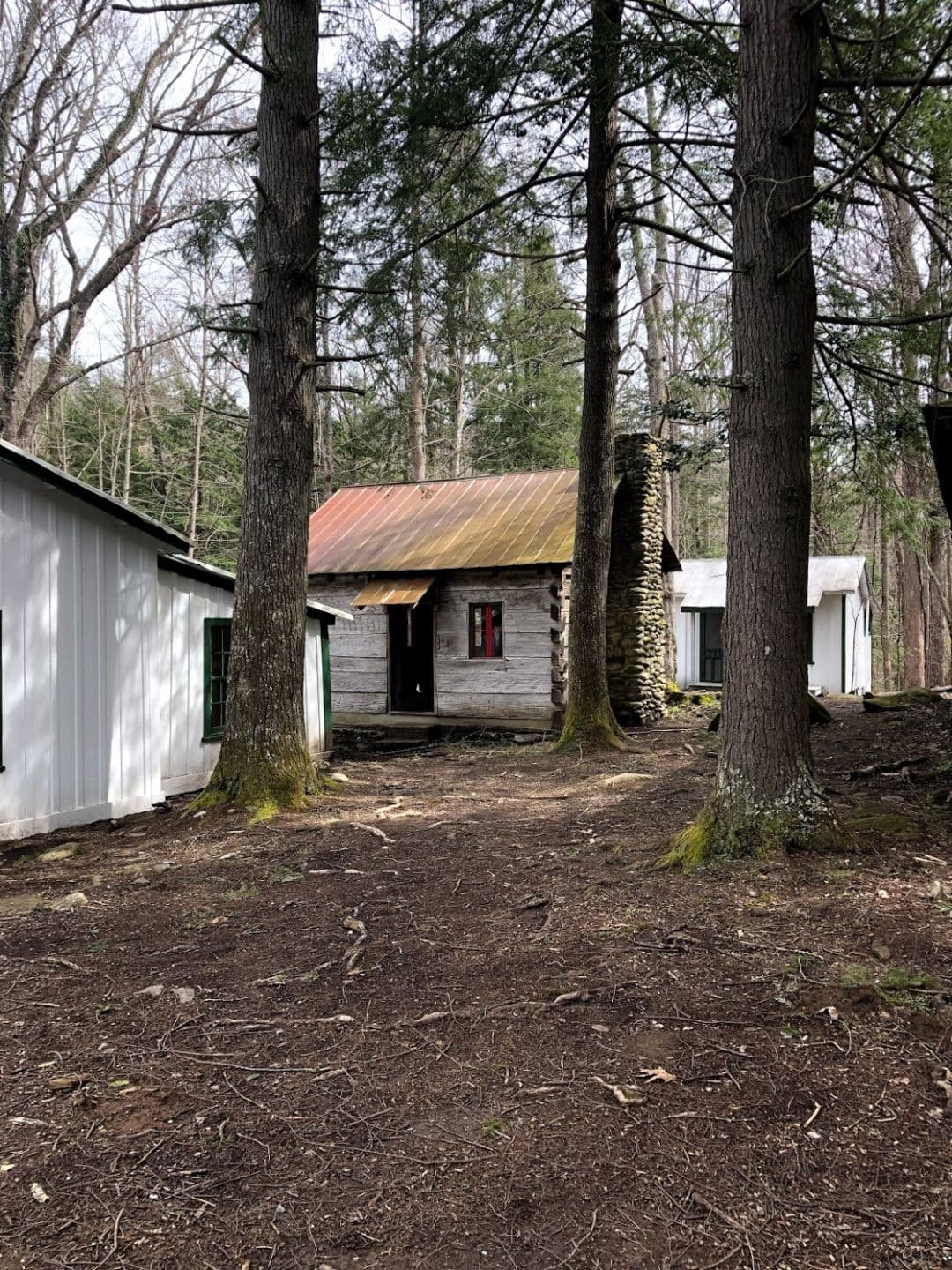
By 1907, Elkmont was a full-blown town with a post office, a schoolhouse, a hotel, a general goods store, a Baptist church, and a number of homes. The homes, known as “set-off houses,” were cheap, pre-made buildings that could roll right off the train and be moved from time to time to follow the logging areas.

Download the mobile app to plan on the go.

Share and plan trips with friends while discovering millions of places along your route.
Get the AppSoon, Elkmont was the second-largest town in the whole county. Residents worked for the Little River Lumber Company six days a
Tourism in Elkmont
The tourism industry in Elkmont started small, with an open-air observation car on the back of the logging train. In 1909, tourists could take the two-and-a-half-hour ride from Knoxville to Elkmont for $1.95 each way. Even a gruesome 1909 train accident on the route from Elkmont to Townsend attracted tourists hoping to catch a glimpse of the wreckage.
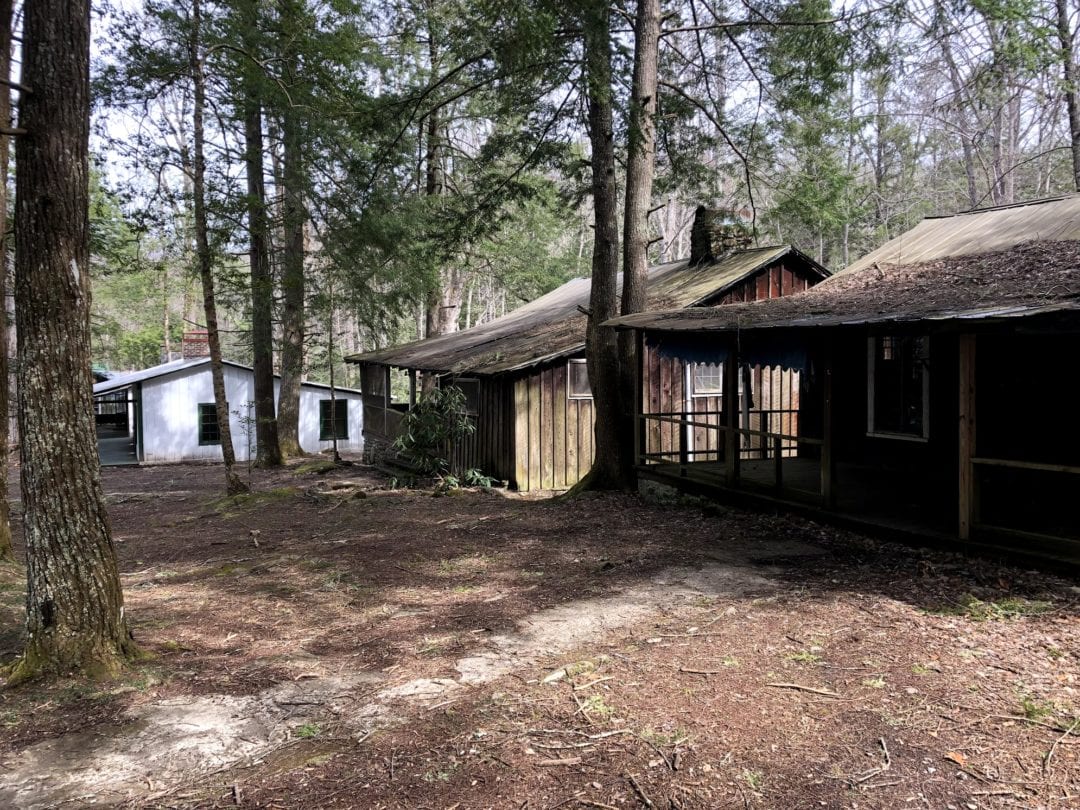
In 1910, the Little River Lumber Company sold 50 acres of land to the Appalachian Club. This was a social club of businessmen from Knoxville, and Townsend was a member and investor. The Club built a hotel and sold cottages and cabins to members.
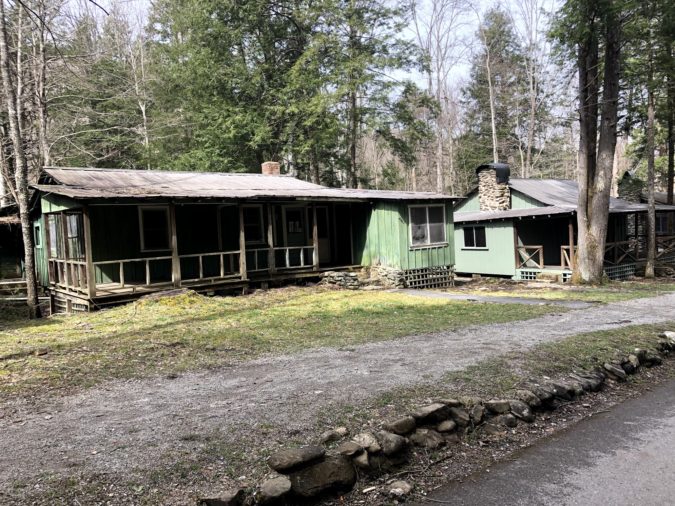
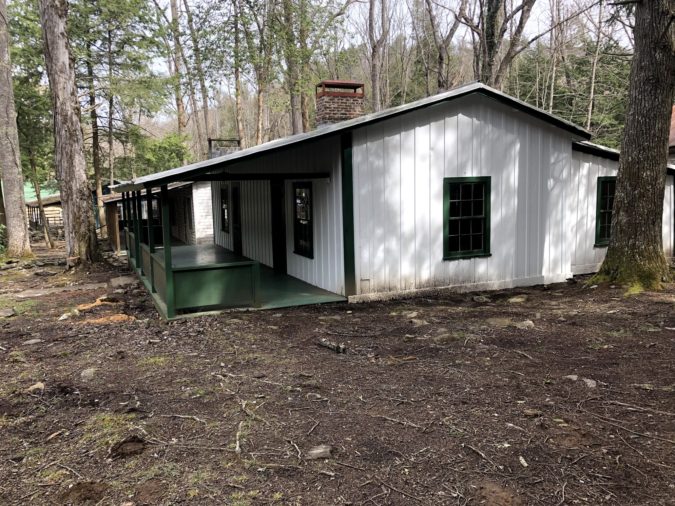
The Appalachian Club wasn’t the only exclusive resort to open in the area; by 1912, a man named Charles B. Carter bought 65 acres from the lumber company to build the Wonderland Club (very appropriate name, if you ask me). The 1910s and 1920s were the golden years for the clubs. The Appalachian Club hosted parties, weekly dances with live music, and even dammed the river to make a swimming hole. Guests loved to play horseshoes as well.
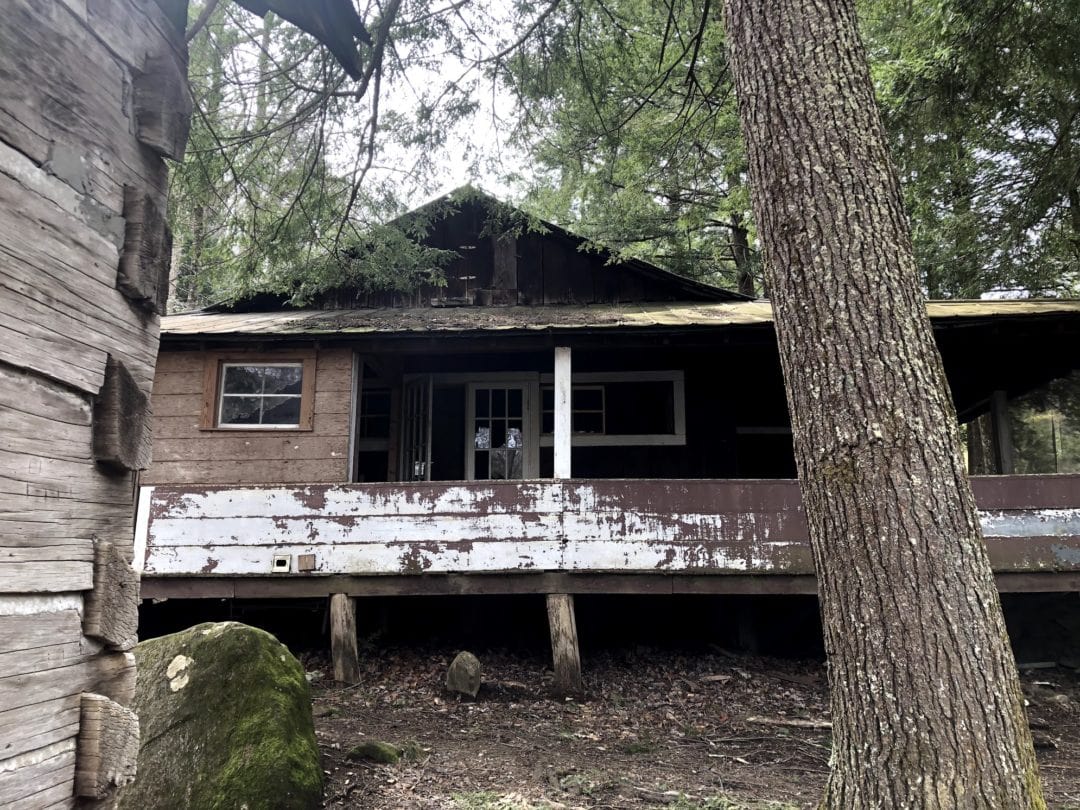
As tourism took off, the logging industry started to wind down. By 1920, the logging company had pretty thoroughly picked over the forests around Elkmont. In 1925, the company dismantled the railroad, and in 1926, they ceased logging in Elkmont entirely, looking for lumber in other parts of what is now the park. This when Elkmont started to rot away into a mere ghost town in the Smokies.
The Great Smoky Mountains National Park
One of the pioneers dedicated to establishing the Smokies as a national park was a founder of the Appalachian Club, Colonel David Chapman. He summered in a cabin given to him—the Chapman-Byers Cabin, which is now located along the Jakes Creek Trail.
Chapman was a leader of the Great Smoky Mountains Conservation Association, established in 1923 by the Knoxville Automobile Club and the local chamber of commerce. He actually hosted legislators at Elkmont to sell them on the park. His plan worked like a charm, and the association set to work acquiring land to donate for the park. By 1934, the Great Smoky Mountains National Park was made official.
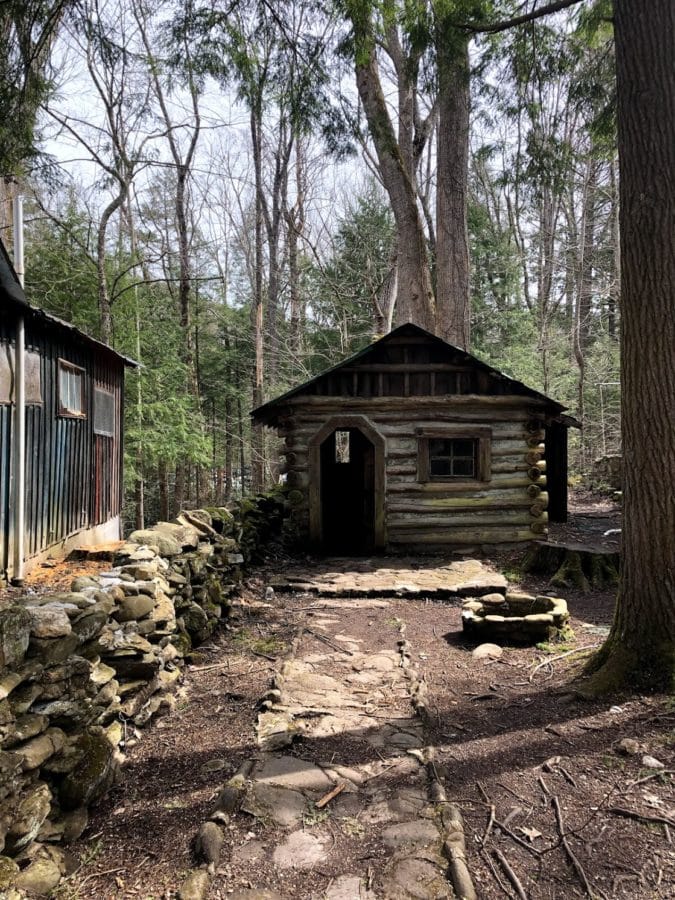
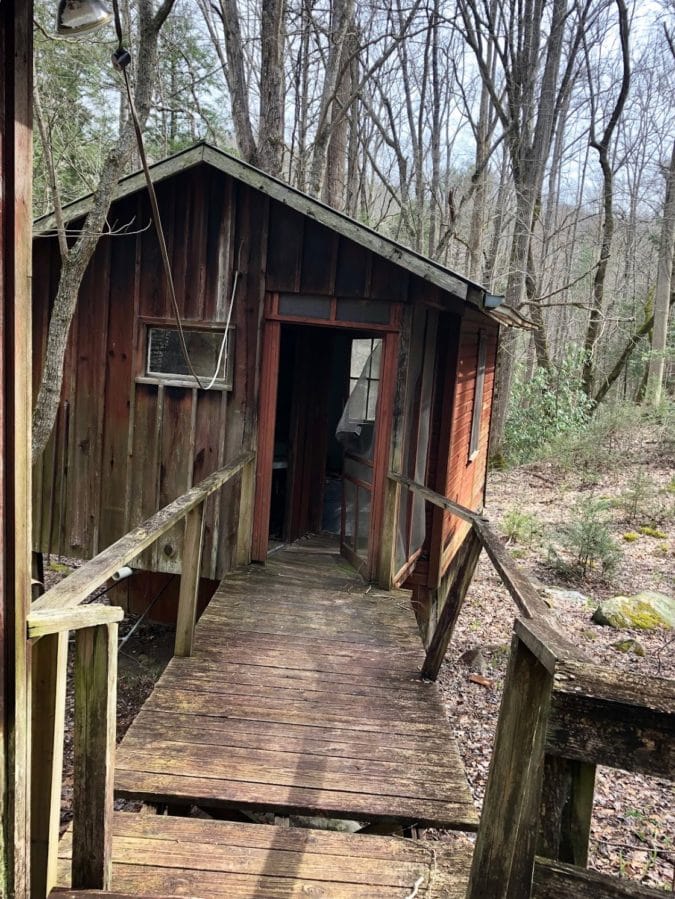
The park is made up mostly of what were once individual properties acquired by the states of North Carolina and Tennessee. These included cabins owned by Appalachian and Wonderland Club members, along with locals. Some outright sold their cabins and moved. The bill establishing the park actually exempted Elkmont from eminent domain. That is how some residents negotiated leases which lasted anywhere from a few years to a lifetime.
Throughout the 1930s, the Wonderland and Appalachian Clubs continued to operate. In 1933, the Civilian Conservation Corps (CCC) moved into Elkmont, now a shadow of its former self. Two-hundred members of the New Deal organization worked to develop infrastructure and facilities in the new park. The CCC camp closed in 1936.
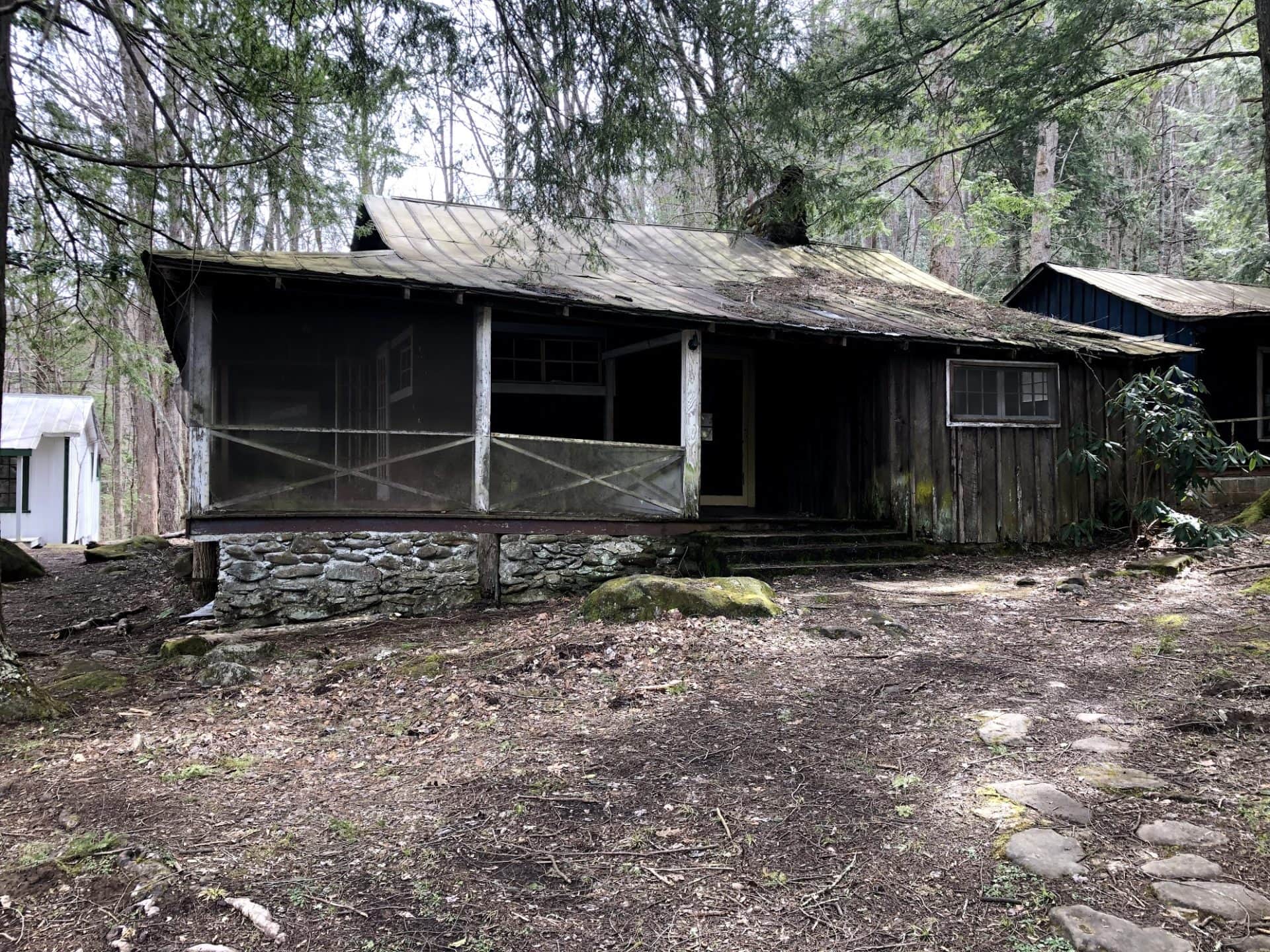
The ghost town in the Smokies
The clubs stayed open, even after WWII. The Appalachian Club slowly died off, and by 1950, no events were being held in the clubhouse. In the 1930s, the Wonderland Club turned into a more traditional hotel rather than a club. It continued to host lively parties, but also kept a retro, rustic vibe. Even when it closed in 1992, it didn’t have TVs or telephones in the rooms.
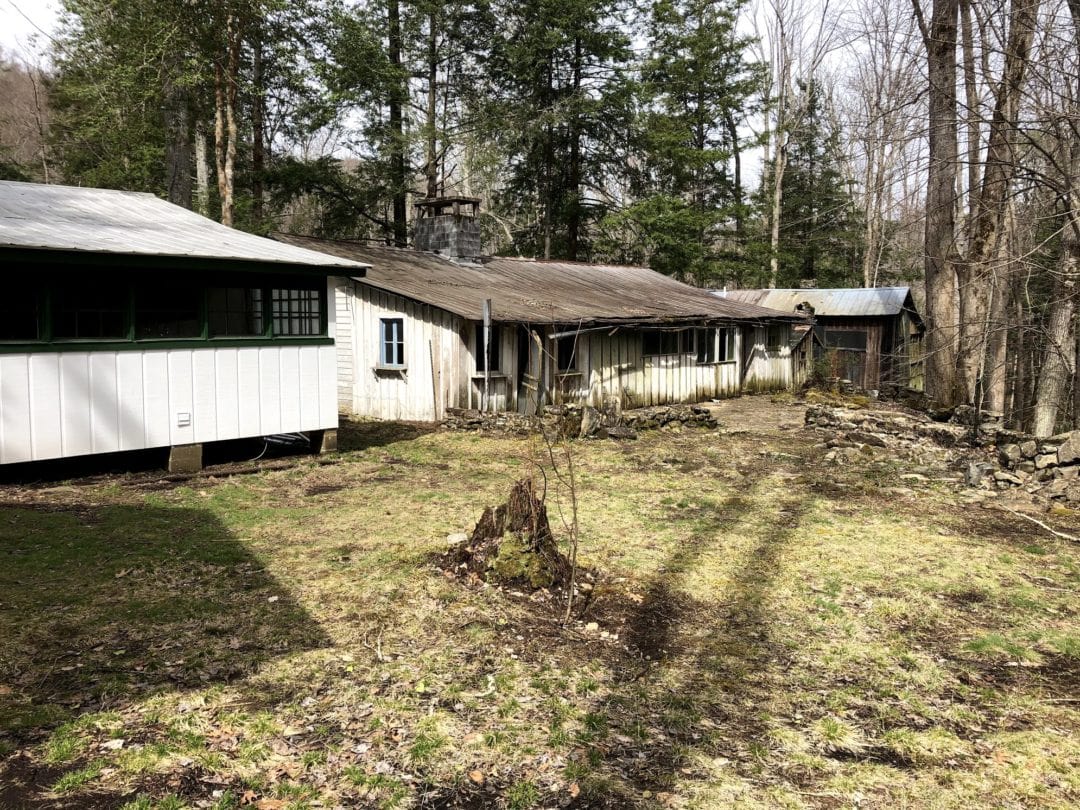
The NPS developed the Elkmont Campground in the late ’50s and early ’60s. While most Elkmont residents’ leases expired in 1992, the last resident didn’t leave Elkmont until 2001. Originally, the park’s plan was to demolish everything, but in 1994, the National Register of Historic places added Elkmont to its list. This forced the NPS to develop a plan to preserve the remains that were in good condition.
In all, the NPS will preserve 19 buildings, including all 17 cabins and the lodge from the Appalachian club, as the Elkmont Historic District. The goal is for all the cabins to be restored by 2025, and to use them to display museum exhibits. The Wonderland Hotel’s main building collapsed in 2005. There’s a sign denoting where it once stood.
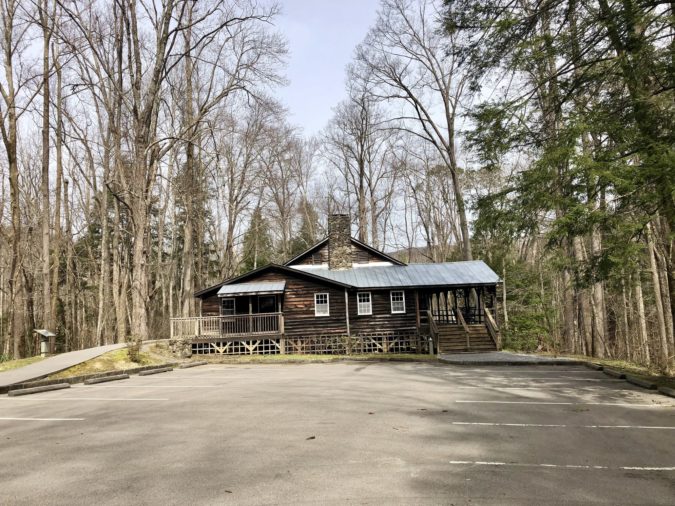
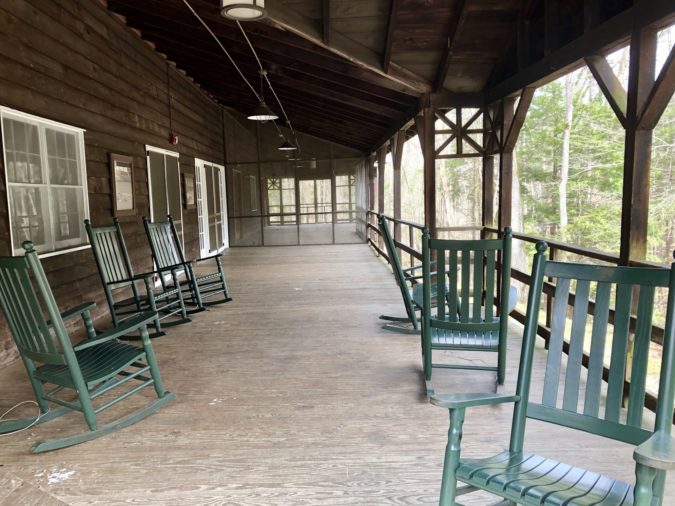
The structurally unsound, demolished buildings haven’t been entirely erased from memory. You can still see stone chimneys, walls, fences, foundations, and other remains along the Little River Trail and Jakes Creek Trail. Even though Elkmont is now a ghost town in the Smokies, you can still feel the almost summer camp-
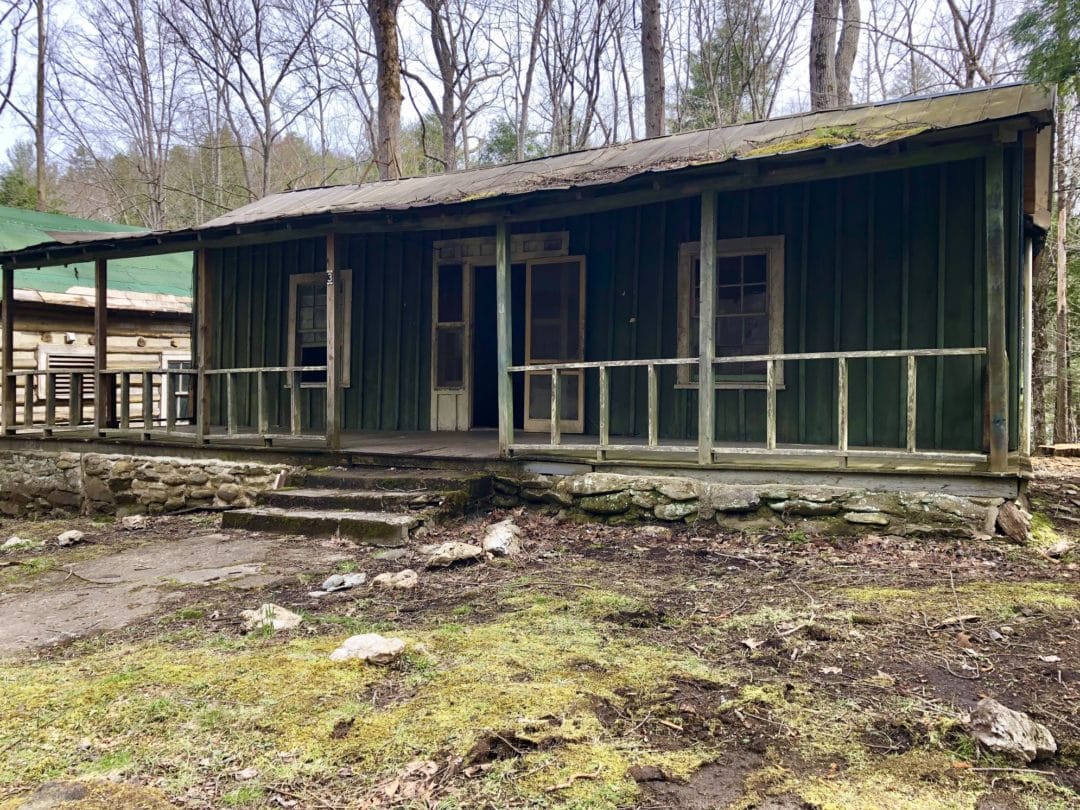
Now is a perfect time to visit. Even though only a handful of the cabins (mostly the newer ones at this point) have been fully restored as of early 2019, the ones you can go into have been lovingly preserved. But, there are still enough “No Trespassing” signs around that you get that eerie, ghost town
And, of course, you can enjoy a more modern take on Smokies tourism at Elkmont’s over-the-top predecessors: Gatlinburg and Pigeon Forge. In a weird way, every single massive dinner show theater, go-kart/mini golf/arcade thing, and pancake palace has humble little Elkmont to thank.
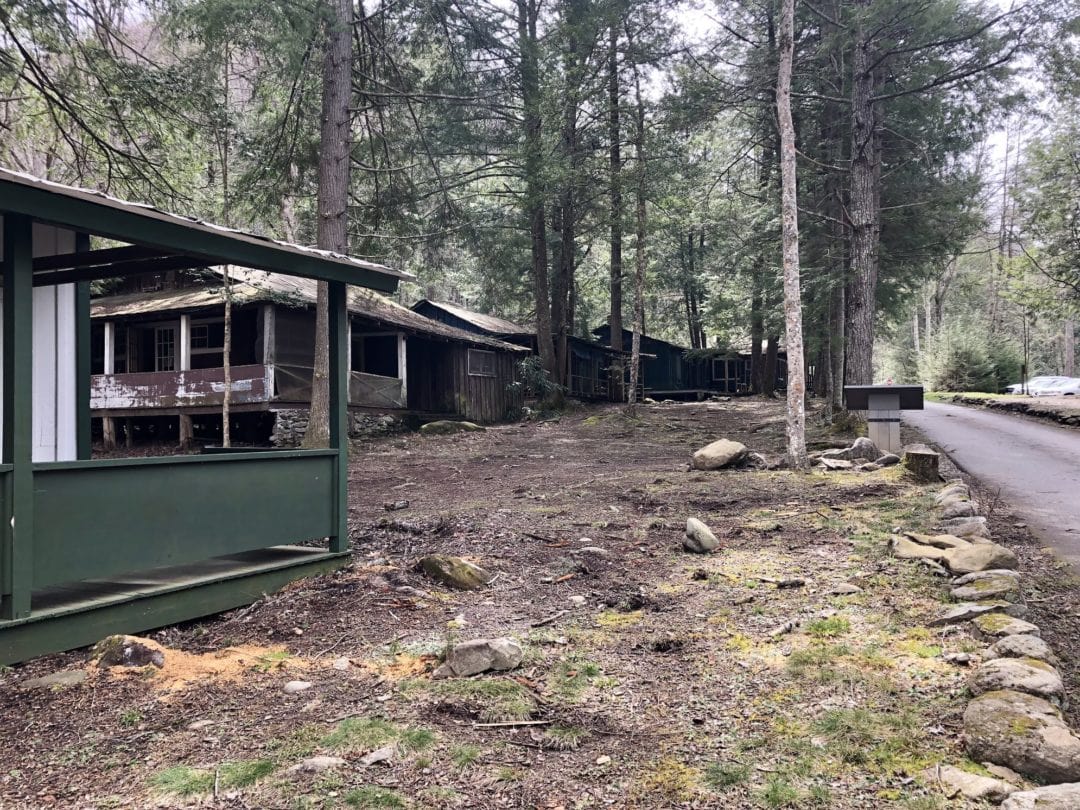
For more information on the history of Elkmont, check out this awesome, interactive map and timeline from the NPS.
A version of this story was first published on March 26, 2018.
